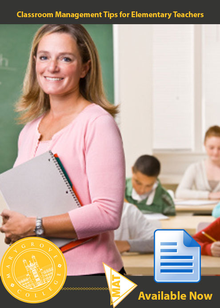Simple Ways to Reach Your Challenging Students
 In one of his academic articles, Andrew Burke reports that teachers make some 30 non-trivial work related decisions every hour and engage in as many as 1,500 interactions with students every day. No wonder teachers are so exhausted!
In one of his academic articles, Andrew Burke reports that teachers make some 30 non-trivial work related decisions every hour and engage in as many as 1,500 interactions with students every day. No wonder teachers are so exhausted!
The opportunity to engage with students as many as 1,500 times every day presents us with lots of opportunities to “get it right”—and just as many opportunities to fall short.
While these four strategies from blogger and ESL teacher Larry Ferlazzo won’t guarantee that we “get it right” all the time, they may prove useful for strengthening your relationships with challenging students.
Simple Ways to Reach Your Challenging Students
Conduct regular student reflections
Most of us regularly tell students what we expect of them; less often do we ask them to set expectations for themselves. One way to have students take stock of their behavior and intellectual growth is by having them write weekly reflections. As an example, you might consider having students answer and discuss prompts like these:
- Are you a positive or negative person?
- Are you a good or not-so-good listener?
- Who are some people that you respect? How do you think they act when things don’t go exactly the way they want?
- Do you think intelligence is fixed? Can it grow with effort?
The idea is for each student to write about how they see themselves in the context of that particular topic and determine if they are satisfied with themselves. If not, encourage them to reflect on how they can improve.
In his class, Ferlazzo begins each week by having students write a goal and closes each Friday by asking them to assess whether or not they were successful in reaching it.
Use daily evaluations
Writing students’ names on the board is one amongst many “old school” methods of discipline still used in the classroom.
Instead of resorting to this, try using daily evaluations instead.
To start, discuss important elements of a healthy classroom. This should be a conversation that includes everyone. Based on this discussion, develop a check list, have students grade themselves on each criteria and assign themselves an overall grade at the end of each day.
Self-assessments should only take a few minutes to review and comment on.
No more phone calls about bad behavior
Instead of calling the parents of a student who was not behaving well, Ferlazzo suggests telling disruptive students that you will not be calling their parents—at least not that day.
Instead, let them know that the phone call will wait until the following week so that you can report all the good things they’ve done and how they’ve improved in the last week.
Arrange a secret sign with students that lets them know they need to stop
Private conversations usually help curb disruptive behavior, but they may not be necessary if you and the student arrange a “sign” that lets the student know a specific behavior needs to stop. This may be as simple as standing next a student or tapping on his or her desk.
If you stop by Mr. Ferlazzo’s blog, you’ll not only find a collection of useful teaching resources, you’ll also be able to read the six remaining classroom management tips we mention here.
Replies to This Discussion
-
Thanks, Anne! I really appreciate you reading and commenting.
- ‹ Previous
- 1
- 2
- Next ›
© 2025 Created by Steve Hargadon.
Powered by
![]()
